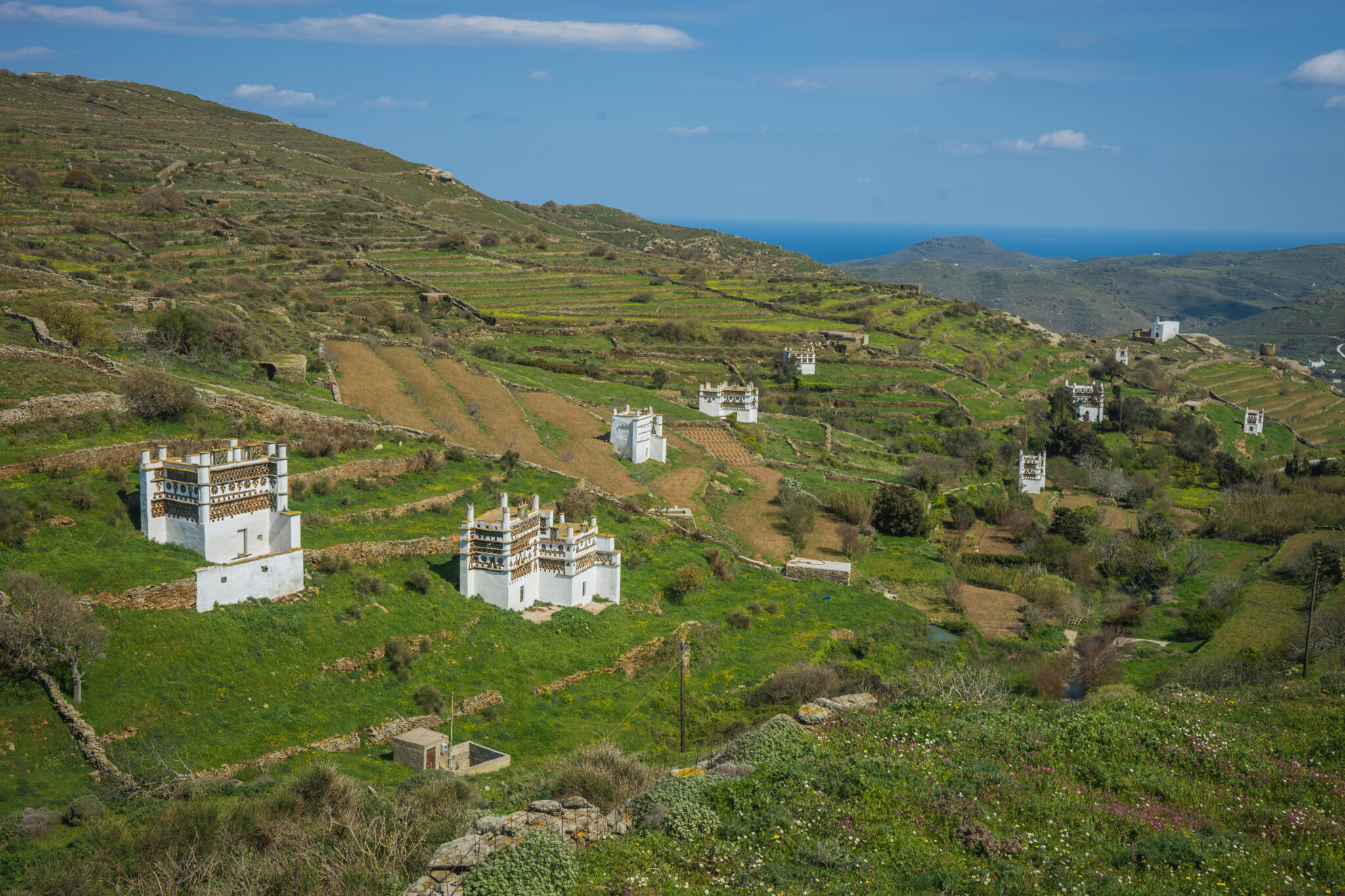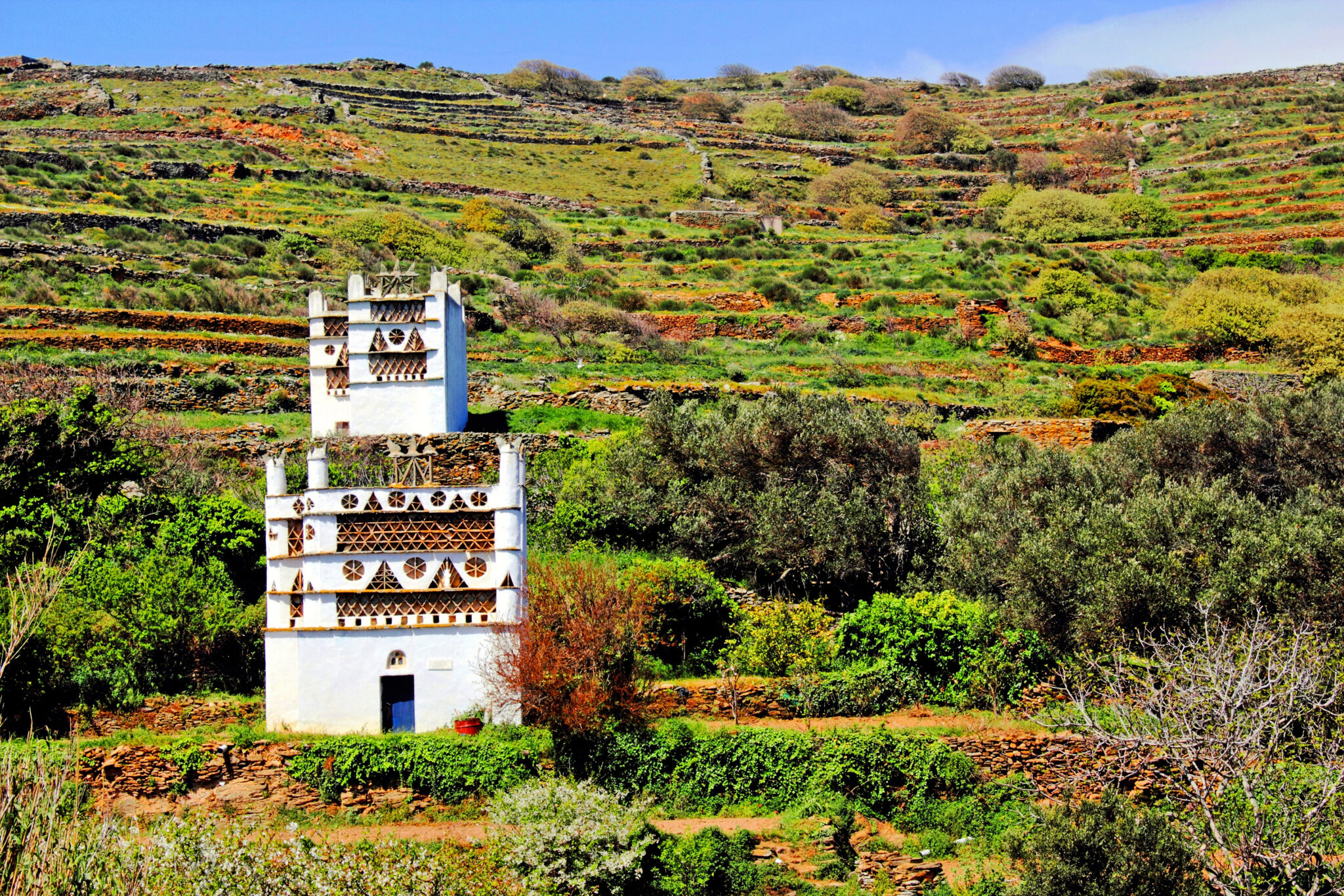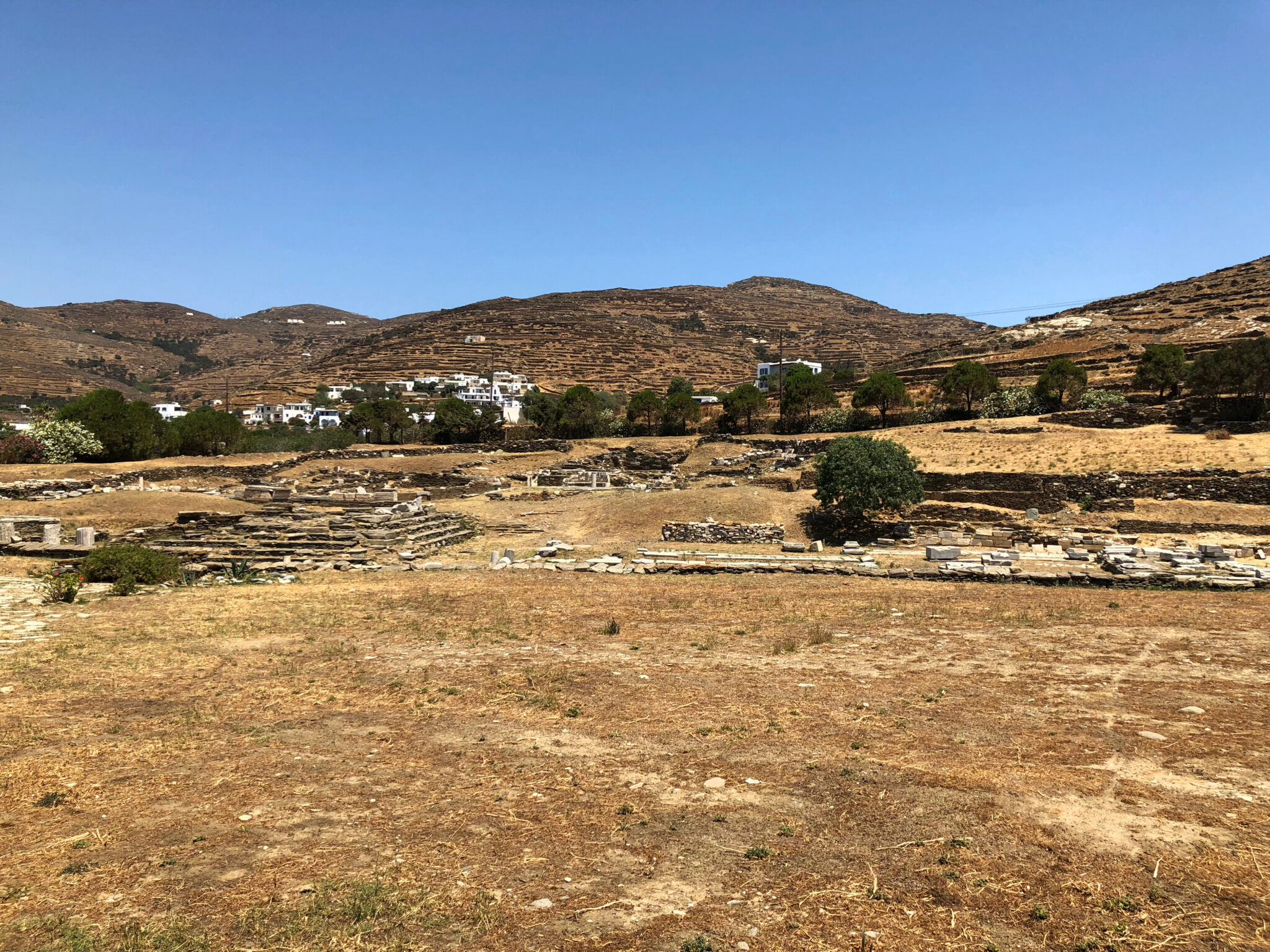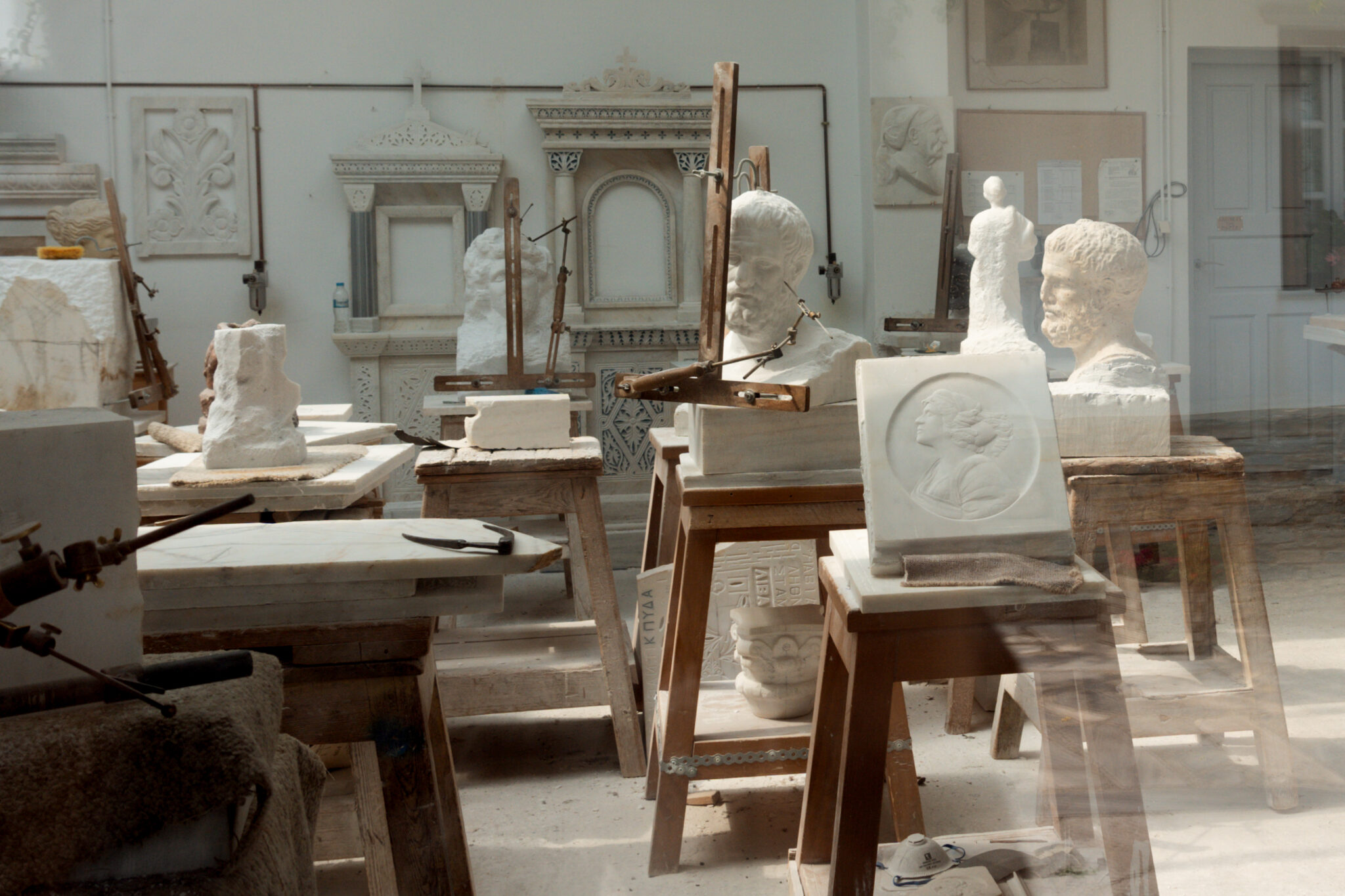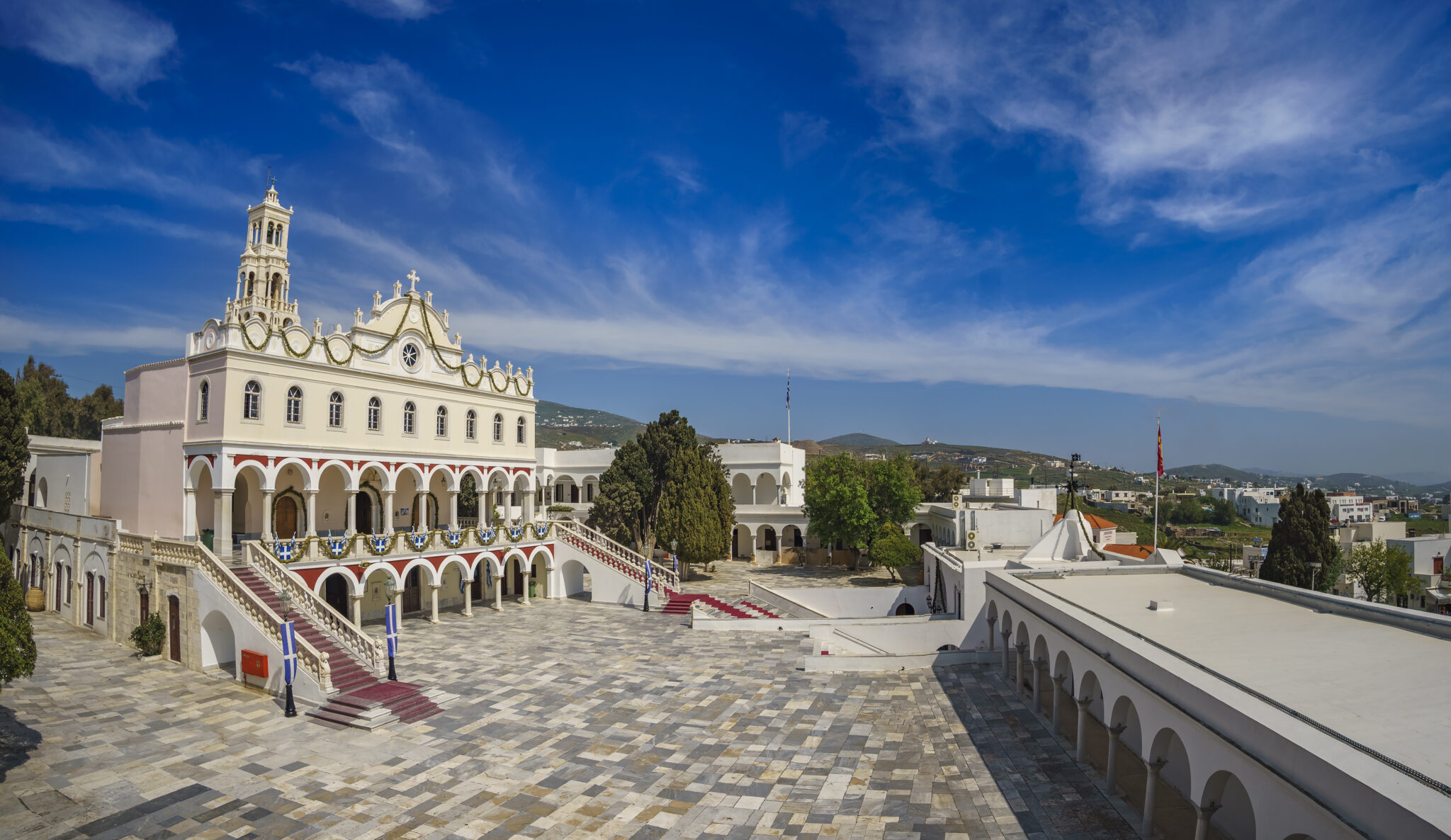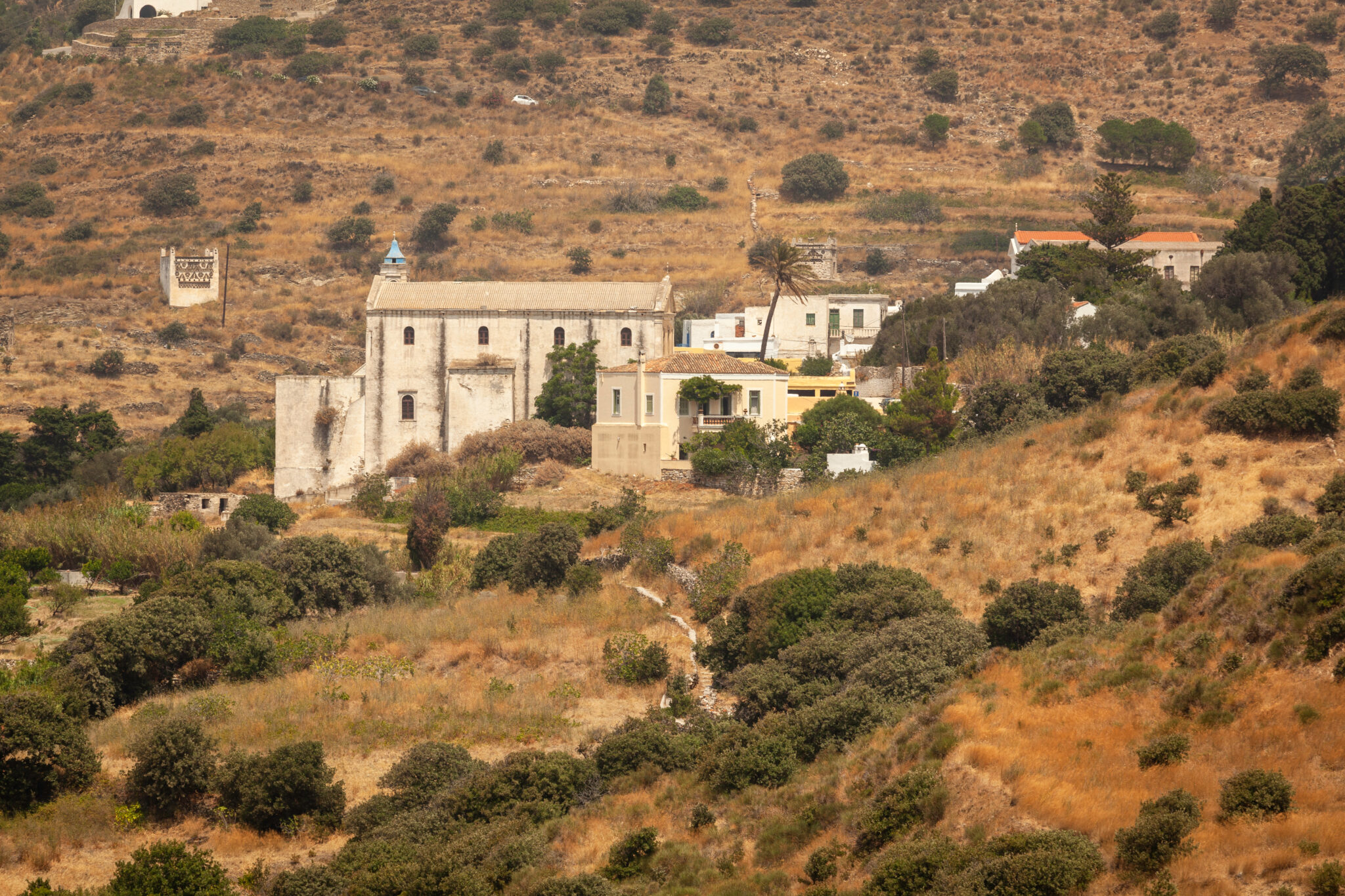The Cycladic Island, neighbour of Andros, has many fascinating features to explore. Tinos has a rich and complex history and ongoingly vibrant culture – including one strongly based in the Orthodox and Catholic religious faiths. Then there is also its ancient past (the island is found to date back to the Early Bronze Age) and more modern times when it underwent occupation by the Ottomans and the Venetians. Here we present the most interesting features experience for yourself across the island.
The Historical Dovecotes
Tinos is adorned with over 600 charming white dovecotes. These two-story structures, originally introduced by the Venetians, served as homes for pigeons and storage for utensils and farming equipment. You can see them in locations such as Krosos, Tarabados Valley, and Kardiani village, and admire the detailed geometric patterns, cypress trees, and sun motifs on their pristine walls, designed to entice pigeons and decorate the landscape.
The Sanctuary of Poseidon
The Temple of Poseidon and Amphitriti, a sacred site dedicated to Poseidon and his wife, hails from a time steeped in history. Its establishment and growth coincide with the era of Macedonian dominance in the Cyclades, dating back to the 4th century BC. The site now presents visitors the intriguing remnants of its past. The unearthed foundations of temples, altars, fountains, and baths can be seen today, both from the road or by foot.
The Fountains
Scattered across the charming locales of the Church of Panagia and the villages of Pyrgos, Ysternia, Agapi, Arnados, and Volax, you’ll discover Tinos Island’s fountains. With 86 of them dotting the landscape, these communal water sources were primarily built in the 18th and 19th centuries. Each fountain carries its own unique charm, adorned with “Xinaria,” intricate marble decorations bearing motifs of flowers, fruits, birds, fish, and more, deeply rooted in tradition and faith. Open-air fountains served entire settlements as well as churches and monasteries, while sheltered ones were integral for watering fields, livestock, and washing chores. These fountains aren’t just functional, they are also spiritual; icons and candles are strategically placed near the water’s source, invoking the Virgin Mary’s blessings on the water and the community it serves.
The Marble Quarries
Renowned for its magnificent marble quarries, Tinos offers a splendid spectacle to be witnessed across its landscapes, with Panormos in the north bearing the most notable sites. Marble and slate exports have underpinned Tinos’ economy since antiquity, influencing the art and architecture of Greece and far beyond, in the form of ancient temples, sculptures and modern design marvels. A quarry visit lets you marvel at the island’s marble wealth in its untouched beauty, offering a glimpse into the Tinos’ singular geological character.
Key Religious Sights
Panagia Evangelistria Tinos
Known by several names – Panagia Evangelistria, Church of the Annunciation, or Church of Panagia Megalochari – this landmark on Tinos Island is among Greece’s handful of topmost revered pilgrimage sites. A sacred icon of the Virgin Mary, unearthed in 1823 after Santa Pelagia’s visions and subsequently attributed with countless miracles, draws the faithful from around the world to this church, built in 1880 on the exact site of the icon’s discovery. The church’s presence inspires myriad celebrations on Tinos, fostering a deep sense of devotion and faith among locals.
A red carpet guides pilgrims from the waterfront up to the hilltop where the white marble edifice stands. Inside, an atmosphere of serenity prevails, enhanced by the rich blue, gold, and silver decor. Numerous gifts – golden and silver offerings, including a symbolic golden olive tree – adorn the church, tokens of gratitude from those who’ve experienced miraculous healings and blessings after praying to the Virgin Mary here.
The Ursuline Convent
Among the whitewashed structures of hillside Loutra, north of Hora, stands the historic Ursuline Convent. Established in 1862, it was transformed from an orphanage to a respected girls’ school and university. Today it is a museum where visitors can wander through preserved dormitories and classrooms, looking at 20th-century furniture, sewing tools, paintings, and photographs, and admiring the soft-blue arches of the chapel within this impressive complex.
The Jesuit Monastery
The Jesuit Catholic Monastery in the quaint village of Loutra, is among Tinos’ distinguished religious landmarks. Jesuit Father Michel Albertini first settled in Xombourgo in 1661, laying the foundation for the monastery that thrived until 1840 before relocating to Loutra. This shift marked a time of heightened pilgrimage and a focus on local youth education. Housed in a magnificent 17th-century building, the monastery has a library, kitchen, and reading room. During renovations, various artefacts from the monks’ daily lives surfaced, leading to their inclusion in Tinos’ cultural heritage. As of August 6th, 1994, visitors can explore a museum showcasing a rich assortment of farming produce, shoe and furniture crafting tools, and other monastic artifacts, offering a unique window into monastic life.
The Kechrovouni Monastery
Built 650 metres high on the slopes of Kechrovouni in Arnados, the Monastery dedicated to the Dormition of Virgin Mary, founded by a prosperous Tinian family in the 11th or 12th century, commands awe. This expansive complex houses the primary church, smaller chapels, ancillary buildings, and the nuns’ quarters. Notably, it’s here that Aghia Pelaghia lived ascetically and experienced her vision of the Virgin Mary revealing Her miraculous icon. Visitors can explore her cell, home to treasured 18th and 19th-century icons and relics.
Read also:
Tinos’ Delectable Local Products
The Unique Wine Varieties of the Cycladic Island Tinos



